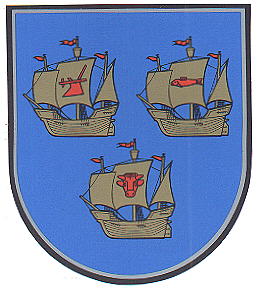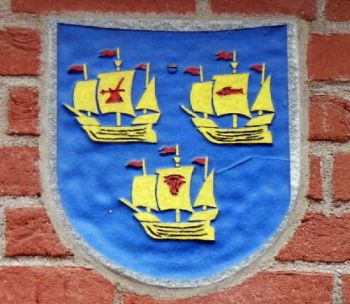Nordfriesland: Difference between revisions
Jump to navigation
Jump to search
Knorrepoes (talk | contribs) m (Text replacement - "{{de}}" to "") |
Knorrepoes (talk | contribs) m (Text replacement - "{| class="wikitable"↵|+Official blazon↵|-↵|'''German'''↵| ↵|-↵|'''English''' ↵| {{blazon wanted}}↵|}" to "{| class="wikitable" |+Official blazon |- |'''German''' | blazon wanted |- |'''English''' | blazon wanted |}") |
||
| Line 12: | Line 12: | ||
|- | |- | ||
|'''German''' | |'''German''' | ||
| | | blazon wanted | ||
|- | |- | ||
|'''English''' | |'''English''' | ||
| | | blazon wanted | ||
|} | |} | ||
Revision as of 08:02, 6 April 2023
NORDFRIESLAND (NF)
State : Schleswig-Holstein
Additions : 1970 Eiderstedt, Husum, Südtondern (1920 Tondern)
| German | blazon wanted |
| English | blazon wanted |
Origin/meaning
The arms were granted on July 10, 1972.
The arms are based on the arms of the former county Eiderstedt. The symbols of the ships differ from the old arms, in that the plough is the symbol of the former county Husum, the fish is slightly changed and represents the typical herring of the island of Sylt in the former county Südtondern. The ox-head is still the symbol for Eiderstedt.
| The arms in the city (source) |
Literature: Reissmann, M. : Die Wappen der Kreise, Ämter, Städte und Gemeinden in Schleswig-Holstein. Landesarchiv Schleswig-Holstein, Husum, 1997.

